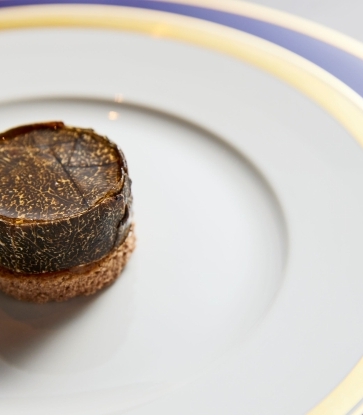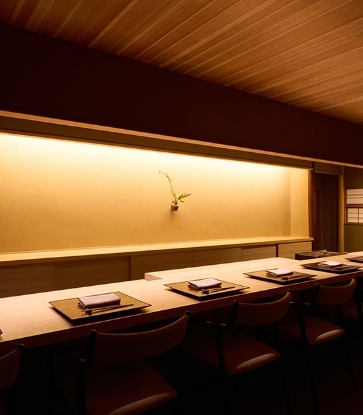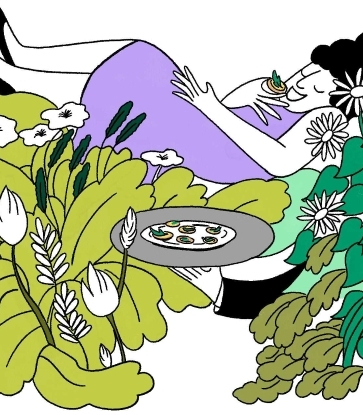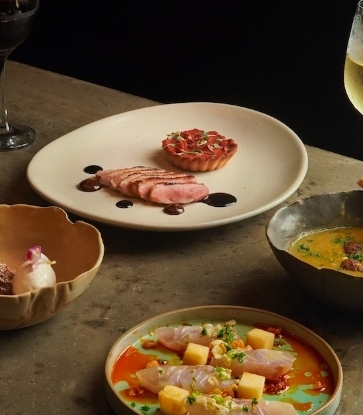I was eleven, I spoke no English, and hardly anyone I knew spoke Italian. The year was 1975, the year of my family’s arrival to the Bronx in New York City. My father had been a livestock merchant in Sicily but after a disastrous loss to our family’s herd of cattle—our only source of income—we were forced to seek a thread of financing somewhere else. An uncle who had earlier settled in the Bronx sponsored the five of us to live in New York.
I missed Sicily, an island that offers up the salty smell of the sea all year long. The dry, light air that transports sweet notes of honeysuckle and gifts people the sharp grassy notes of fig and tomato plants. I missed watching Mt. Etna occasionally let off some steam; she is majestic even when she’s un po` arrabbiata (“a bit angry”).
While I desperately wanted to hold on to the life I knew, it was simply not possible. We were in America now, and that was that. Life remained a chaotic blur for years. My parent’s generation did not share their problems. All I knew was that the tension in the house was so thick, I could cut it with a knife. Nostalgia aside, the first new memories were an assault to my senses. The smells of the city were unique and unpleasant, the water tasted like bleach, and the food was awful. We had never seen pre-prepared foods; our cupboard back in Sicily was filled with fresh herbs, cases of fresh citrus, local cheeses and our own preserved tomatoes or jars of la salsa di pomodoro, or simply, la salsa. And the pasta! I remember Mueller’s macaroni, an American brand, that my mother always overcooked.
Slowly we figured things out and after a bit we were eating better. An informal support group of paesani, people from the same towns in Sicily, formed around the newly arrived families. We were embraced and told how to navigate school, shopping, banking and the like.
By the age of 16, I was working and earning some money. I took the subway down to the (then) World Trade Center to purchase my first cookbook from Rizzoli. The book, Italian Regional Cooking by Ada Boni, was introduced to me by my middle school teacher and guidance counselor, a passionate cook of Neapolitan descent. I studied each region with a hunger that I had never experienced before. I must have cooked dozens and dozens of meals; not all of them were a success. I could think of no better way to explore the bounty offered by the Italian cooking repertoire and reconnect with my roots.
In my journey through these recipes I recognized that there are very few pantry items as simple and contemporaneously unique as la salsa di pomodoro. The regions of the Italian north use creams, rich cheeses, truffles; recipes called for stewing meat with Barolo; pheasant and frog legs were difficult ingredients to wrap my imagination around, never mind presenting to my skeptical Sicilian father! For me, la salsa was both familiar and accessible. The preservation of nature's bounty goes back thousands of years. Agriculture was and continues to be the principal occupation all throughout the island. Every year, tomatoes in the final stage of juicy maturity were harvested and preserved for the long, cold winter months ahead.

Over time I also came to realize that la salsa is the cornerstone with which the diaspora of Southern Italians managed to build a new life. This simple staple could keep a family firmly planted no matter where the new “life” took root.
For me, making la salsa each year is a sensory way to tell my family’s history while also upholding tradition. Having my own family was reason enough for me to carry on the ritual. It was a gift to my daughter, a small piece of me, of my culture. What better way to nourish than through food? Hopefully, the story will be told for generations to come.
Making la salsa in a Bronx apartment in late August is challenging. However, with a proper game plan it can be done. A week or two before, I mosey on over to the Arthur Avenue Retail Market, an indoor bazaar established in the early 1940s that sells everything from pastries to produce. I scope out the situation and chat with the tomato man (yes, I have a tomato man). He is a bit salty, so I limit my questions.
“How are the tomatoes looking?” I might ask. His answer: “They look red.” I’ll leave my name and number and anticipate a call by the end of August.
As the time gets closer, I sterilize the Ball jars. I check on my stash of sea salt from Trapani and good olive oil (which I also purchase on Arthur Avenue). I fish out the oversize pots, large wooden spoons, and the electric food mill from storage. The day I receive the call, I dash over to the market and pack my car with cases of plum tomatoes and loads of fresh basil.
At home, I stash the cases in the coolest area of the house. When it’s time, I empty the tomatoes into my kitchen sink to wash each one by hand. I am armed with music—Sinatra, Fitzgerald, and Ellington among others. And, of course, a cool white wine.
It’s a two-day event, exhaustingly hot, but so worth it. I chop the ripe, washed tomatoes and cook them down with just enough salt and plenty of fragrant basil for over an hour. Once cooled, I transfer the tomatoes to the mill, which separates the pulp from seeds and skins. The slurry that remains is then set back on the stove to boil for an additional hour or so. I transfer the hot tomato sauce, at last la salsa, into the sterilized Ball jars, seal them, and plunk each one into a slow simmering water bath. The jars will need to be fully submerged and the simmer of the water needs to be steady. It’s more a process than a recipe.
Opening up a jar of the sweet, pulpy sauce is like opening the beauty of a summer day, any time I want. It is fantastic. Of greater value is that with each meal, I am able to pass on a taste of my history.
Hero Image: Photo by Eyasu Etsub on Unsplash





















